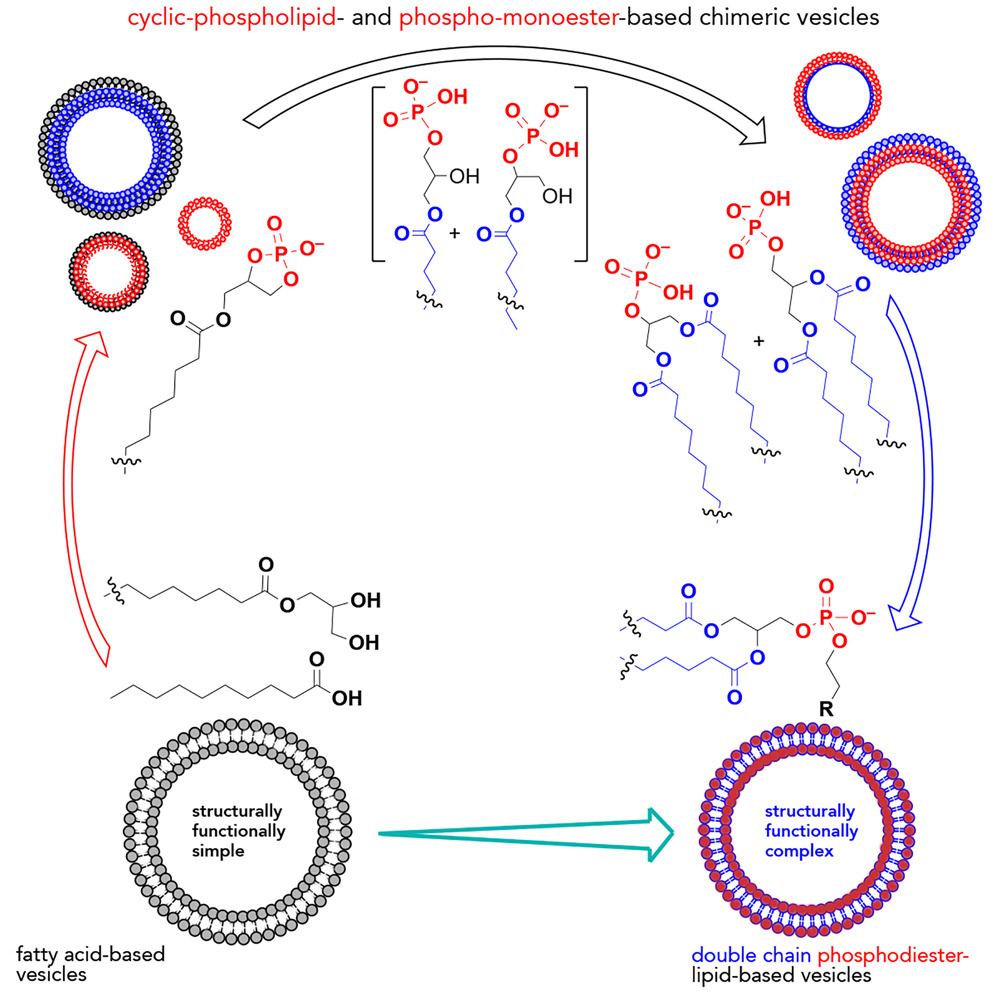The Krishnamurthy Lab

Research in our group is focused on the use of synthetic organic chemistry and methodology to
- experimentally address questions concerning the origins of life with respect to the advent of functional monomers and the emergence of informational polymers.
- fashion artificial informational polymers in order to expand the interface between synthetic nucleic acids and the natural biopolymers (proteins and RNA/DNA).
- investigate protometabolic chemical reactions and networks that have potential to evolve towards self-sustaining reaction cycles.
- synthesize (prebiotically inspired) vesicles and study their transition to functional protocells capable of harboring reaction networks.
- make available novel molecular tools that may provide new avenues for probing biological systems and for research in synthetic biology.
- make available diverse novel molecules and intermediates that would be useful in chemical therapeutics.
Group Members (Feb 2025)
IN MEMORIUM OF
PROFESSOR ALBERT ESCHENMOSER
Aug 5, 1925 - July 14, 2023

Recent Work from Our Group
Experimentally modeling the emergence of prebiotically plausible phospholipid vesicles.
The potential of glyoxylate as a prebiotic source molecule and a reactant in protometabolic pathways—The glyoxylose reaction

Prebiotic synthesis of α-amino acids and orotate from α-ketoacids potentiates transition to extant metabolic pathways

Cyanide as a primordial reductant enables a protometabolic reductive glyoxylate pathway
Concurrent Prebiotic Formation of Nucleoside-Amidophosphates and Nucleoside-Triphosphates Potentiates Transition from Abiotic to Biotic Polymerization
Diamidophosphate (DAP): A Plausible Prebiotic Phosphorylating Reagent with a Chem to BioChem Potential?

Prebiotic Phosphorylation and Concomitant Oligomerization of Deoxynucleosides to form DNA
A plausible metal-free ancestral analogue of the Krebs cycle composed entirely of αlpha-ketoacids
led by Dr. Mahipal Yadav from our group

New Clues to Chemical Origins of Metabolism at Dawn of Life
(by John Rennie, Deputy Editor, Quanta Magazine)
On the early Earth, a forerunner of the complex cycle of reactions that underpins metabolism in today’s cells might have originated from interactions between just two simple, versatile molecules in water, according to new research.
The role of sugar-backbone heterogeneity and chimeras in the simultaneous emergence of RNA and DNA












